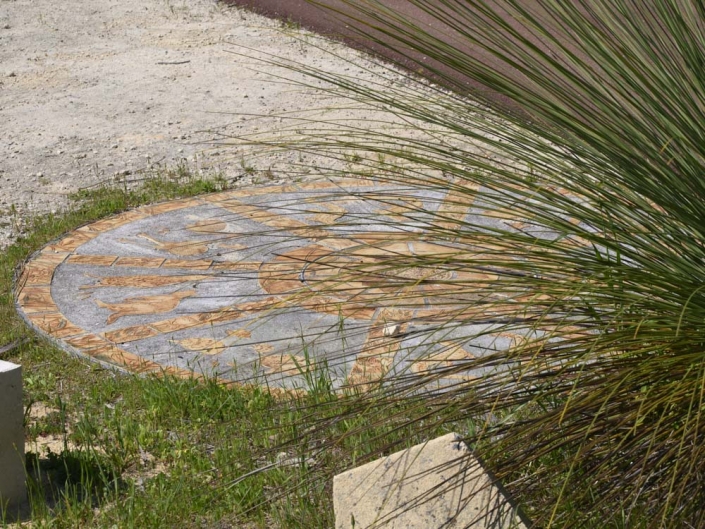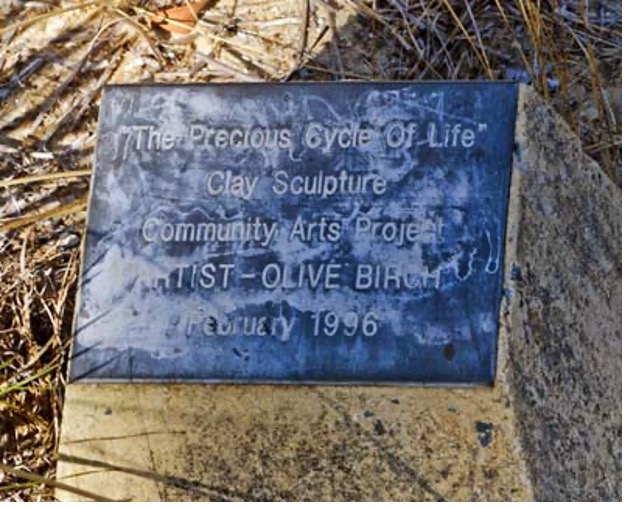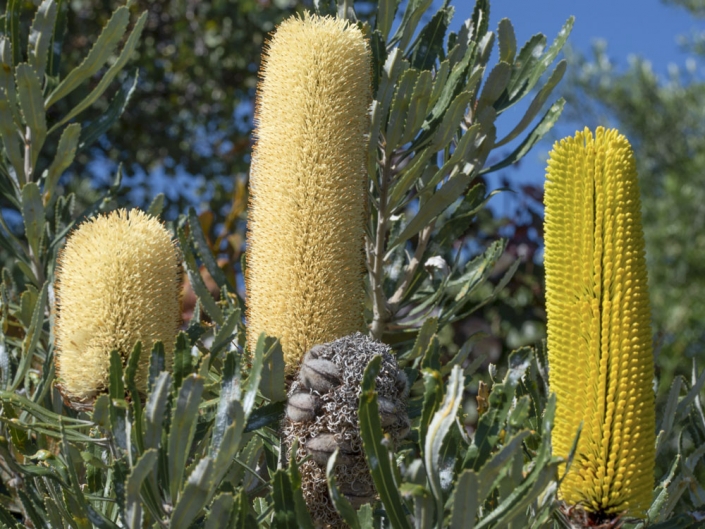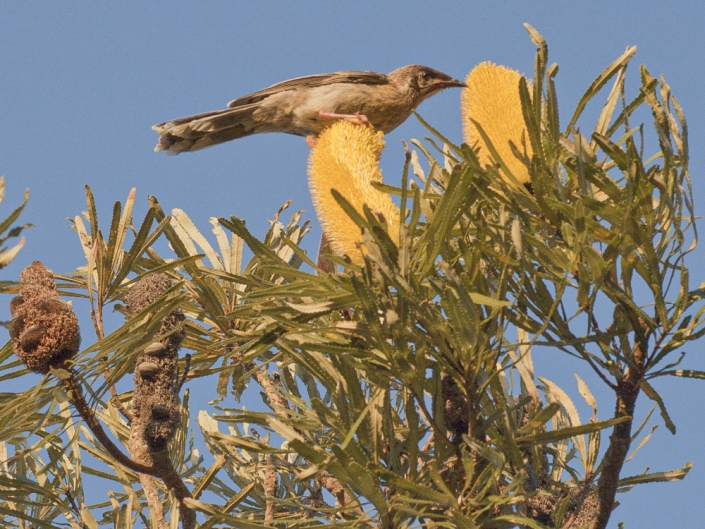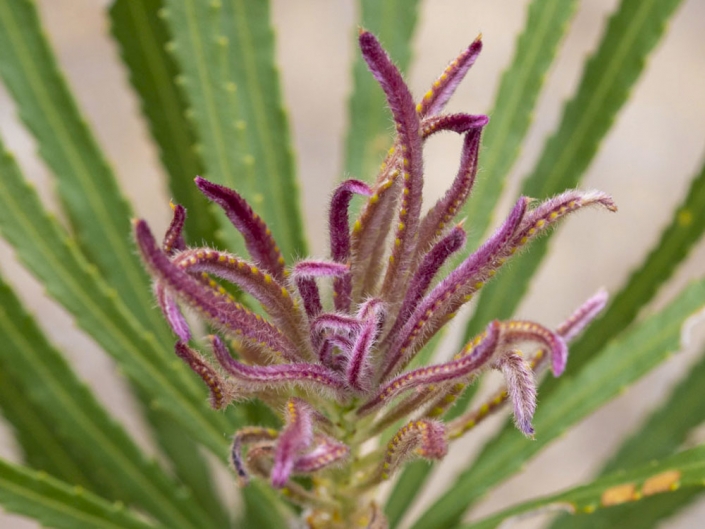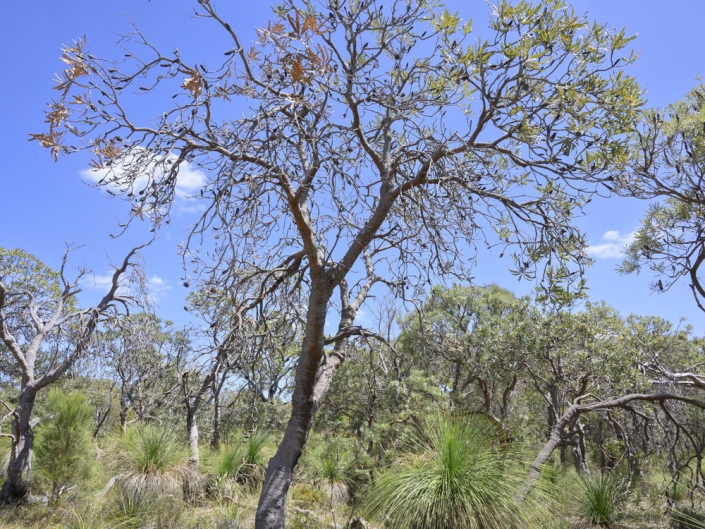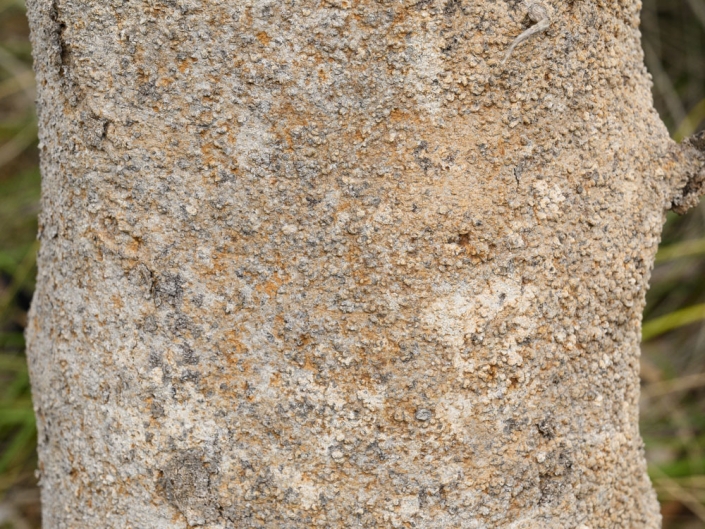Point of Interest 5: Cycle of Life Sculpture
The Precious Circle of Life Sculpture, a log bench and the western entrance to the side nature-trail loop are nearby. This area is open banksia woodland with scattered small jarrahs and sheaoks, with many balgas in the understorey. Pansy Orchids are common here in early spring, especially west of the marker. Some large banksia trees have died but there are also seedlings and saplings in the area. These dead trees are probably a consequence of lowering of the water table due to insufficient rainfall and excessive groundwater harvesting.
Common Wildflowers
Winter – Dwarf Sheoak (Allocasuarina humilis), Lomandra species, Red-ink Sundew (Drosera erythrorhiza).
Spring – Pansy orchids (Diuris magnifica), Cowslip Orchids (Caladenia flava), Yellow Buttercups (Hibbertia hypericoides), Yellow Banjine (Pimelea sulphurea)
Late Spring & Early Summer – Purple Flag (Patersonia occidentalis), Fragrant Waitzia (Waitzia suaveolens), Jarrah, Candle Banksia
Focus Topic 11. Precious Cycle of Life Sculpture
The sculpture located here has a circular arrangement of tiles portraying animals that were once common here. These are Kangaroos, Echidnas and Goannas. This clay tile sculpture was produced by Artist Olive Birch and community helpers. The Mayor of the City of Wanneroo unveiled it in February 1996. There is a short, unpaved side loop you can follow that re-joins the main track near Point of Interest 3.
Focus Topic 12. Candle Banksia
The Candle Banksia (Banksia attenuata) is called Biara by the local Noongar Aboriginal people. It is adapted to an environment in which bushfires are relatively frequent and can resprout from scorched branches or grow from seed after fire. The striking yellow flower spikes are a key food source for birds and insects in late spring and early summer and Carnaby’s Black Cockatoos feed upon their cones (Focus Topic 10). Banksia trees grow new branches laterally beneath their terminal cones. This allows the age of young trees to be estimated by counting numbers of branch orders.
The main banksia trees found in Warwick Bushland are the Candle, Menzies (or Firewood) and Bull Banksia. The Acorn Banksia (Banksia prionotes) has been planted extensively along some of the boundaries of Warwick Bushland (especially near Warwick Road). This species does not occur naturally at this site but grows in areas slightly closer to the coast such as Star Swamp.
Banksia species flower in different seasons creating an almost continuous source of nectar and pollen for birds and insects. This allows more pollinators to visit flowers of a given species to maximise seed set. Candle Banksia begins flowering in late spring and extends through summer (October to February). Firewood Banksia flowers in autumn and winter (February to October). Bull Banksia flowers in spring (September to November). The Acorn Banksia flowers from summer to winter (January to August). Thus, Warwick Bushland is an important food resource for birds at times when nectar is scarce.






